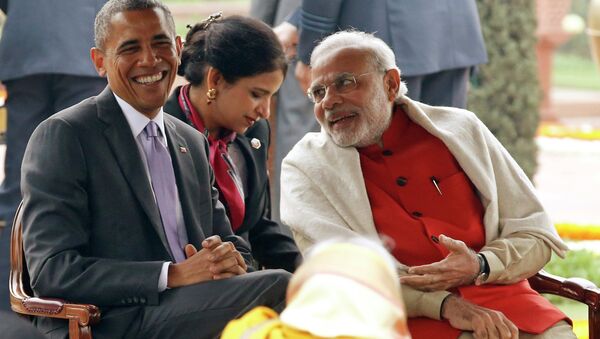Symbolism Trumps Substance
Obama’s trip to India was heavy on symbolism but light on substance, but that doesn’t mean that it wasn’t a success in some ways.
Although nowhere near rivaling the more than $100 billion worth of deals that Russia and India inked during Putin’s visit, Obama’s trip shows that the US is still a major factor in India’s strategic planning.
As Modi seeks to transform India into a global actor, he has set his sights on what he views to be pragmatic cooperation with the US in order to ‘formalize’ India’s nuclear status and perhaps reform the UN Security Council by giving New Delhi a permanent seat in the future.
The Devil’s in the Details
Ever since the US and India signed their milestone nuclear cooperation agreement in 2008, the sticking point towards actually implementing it was an Indian law that held suppliers potentially liable for any accidents. American companies objected to this legislation as being a provision that could potentially bankrupt them in the event of a tragedy, while Indian lawmakers saw it as necessary to safeguard the country from any repeat of the unforgettable 1984 Bhopal industrial disaster.
While India has to bend over backwards to accommodate its American partners, no such demands are being dictated by the Russian side. Instead, they simply agreed to behave in full compliance with Indian legislation, showing that doing business with Russia is actually a lot easier than Western media stereotypes may lead one to believe.
So what’s behind Modi’s insistence on working with the Americans when the Russians, with their global reputation as nuclear energy leaders, could do the same job (if not better) without such legal strings attached?
The Elephant in the Room
One of the most important, albeit unspoken, factors guiding India’s foreign policy decisions is the anxiety that it feels about China. The East Asian giant pursued the so-called ‘String of Pearls’ strategy throughout the Indian Ocean region in the early 2000s to gain naval refueling stations and secure ports for its Mideast and African energy imports, and now it aims to implement the Maritime Silk Road to tie all of its existing and future coastal partners together in a broader economic framework.
While having announced in Beijing earlier this week that India is envisioned as having an important role in the Maritime Silk Road, New Delhi remains suspicious and feels that China is encroaching in its natural sphere of influence. On top of that, the two Indian-Chinese border disputes have heated up in recent years, with both sides accusing the other of provocative actions. Because of these developments, India sees China more as a rival than a reassuring partner.








